
An Uncertain Future for the Ontario Power Company Plant
The ominous beauty of disused industrial space is very powerful. Earlier this week, I took a look at the mothballed Rankine power station in Niagara, and today we slide to the base of the Falls where the now 10-year-decommissioned Ontario Power Company hydroelectric plant lies.
Opened in 1905 at the foot of the Horseshoe falls, this massive complex once seemed a symbol of steadfast power and industry. During those decades, conduits almost 2000 meters long fed water from the falls to the 15 massive generators at the facility. Sadly, the generators are no more, the turbine hall now a sealed-off tomb to a once mighty giant.
The Niagara Parks Commission was gracious enough to grant us access to the plant just after our visit to Rankine, and once again we were probed for ideas as to the future of the building.
For years I have hunted out the site's very prominent facade in various photographs of the Falls themselves, so I was naturally curious to see what lay behind its impressive walls. What I found was shocking: a massive hollowed-out space that seems, at first glance, a bit incongruous with its exterior structure, which looks far older.
After a brief explanation regarding the quirky Egyptian-style details found throughout the masonry, the space began to make more sense. With the constant, yet somewhat muffled, booming of the falls echoing throughout the entire building, one got the sense that he or she was sealed in a massive tomb. But, of course with the machinery present and running, I am sure that the aural experience was quite different.
Looking carefully at the floor, one could easily make out where the 15 mighty generators once sat...
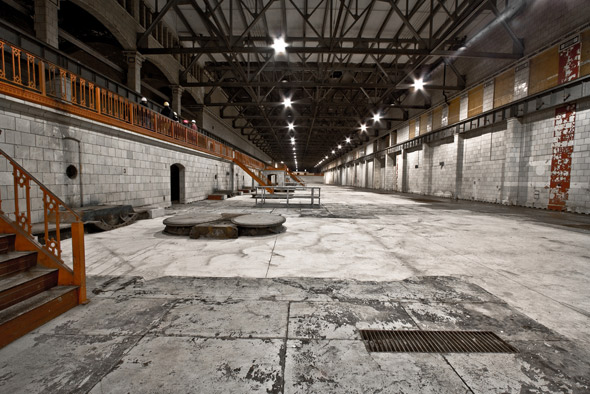
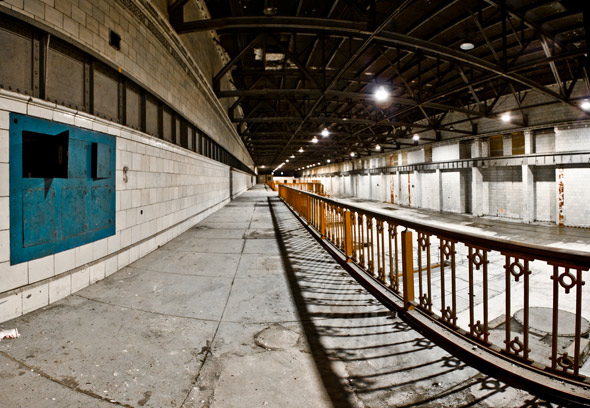
Climbing the beautiful staircases to the gallery, the space seemed interminable...
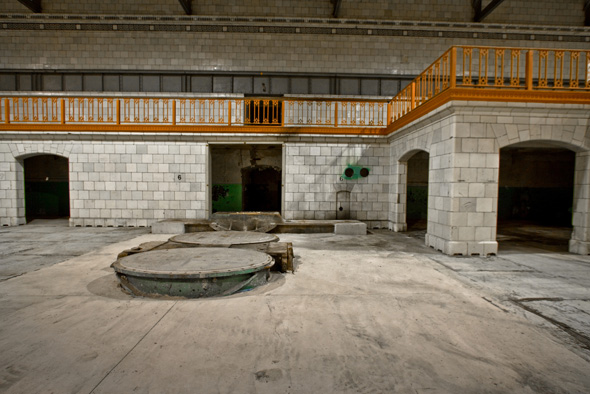
From certain points, the building seemed like a bizarre modernist castle encased in a box...
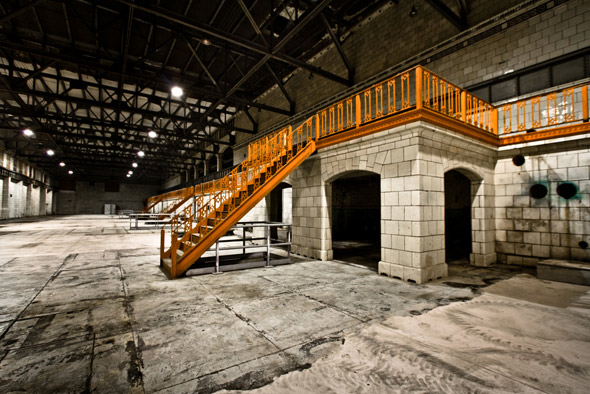
There was an air of solidity about every nook and cranny, and in every detail of the former hydroelectric plant...
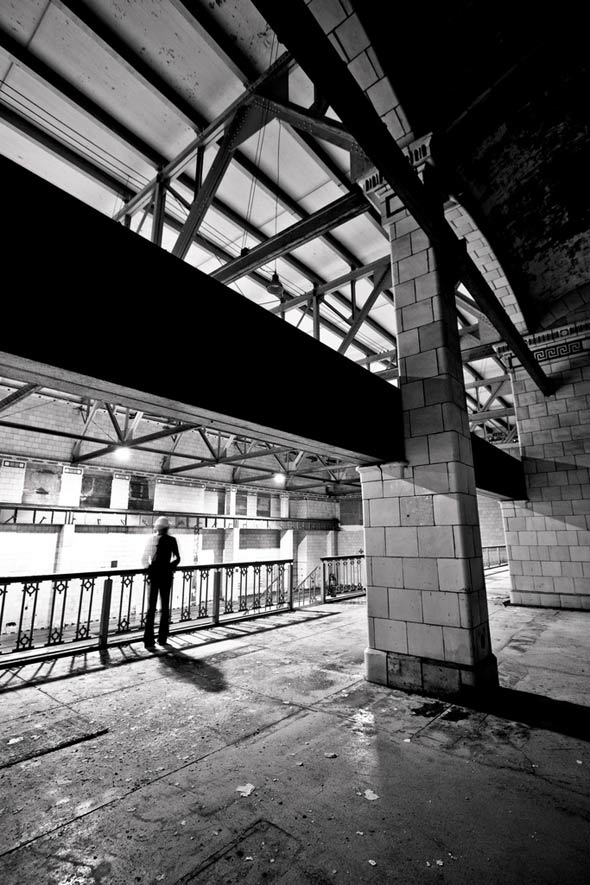
That feeling of solidity, as it turns out, was a planned one. The beams themselves have much less space between them than is usual for a building of its size, and the roof is multi-layered, all in order to protect the station from what mother nature has installed just behind it. Even on the steep gravel road leading down to OPC, we noticed all manner of warning and hazard signs; I cannot imagine what this trek would be like in the winter time...
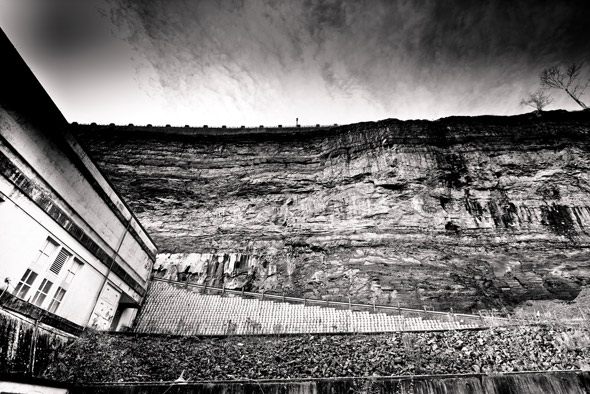
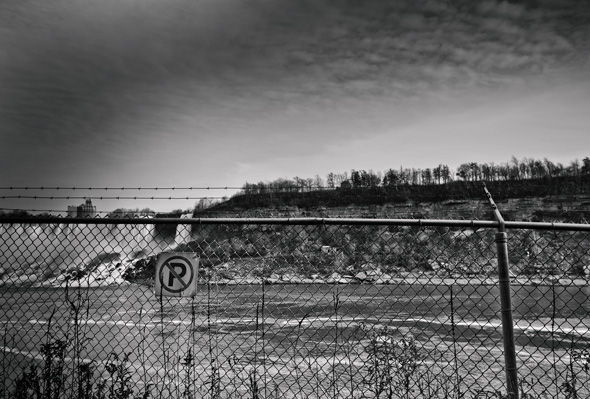
Being that we had just come from one of the most pristine, beautiful stations I have ever been inside (Rankine), OPC initially seemed somewhat of a disappointment. Its beauty, as it turns out, is far more subtle.
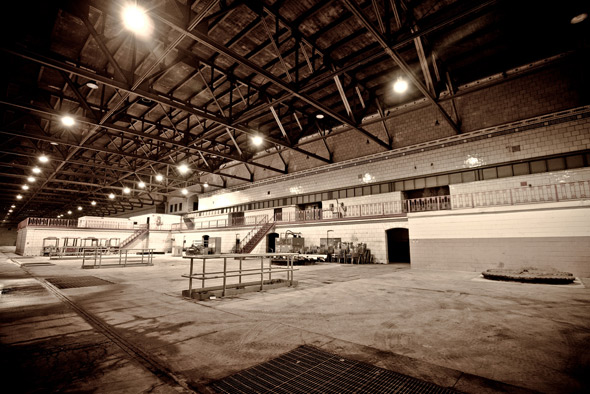

I did not get the same sinking feeling at the Ontario Power Company as I did at Rankine; I was not immediately reminded of Toronto's own derelict power station. Leaning over the ornate orange railings inside this place, there was a great sense of possibility, of hope. Had they only followed the same steps with Toronto's Hearn, there might have been salvation. After all, OPC and R.L. Hearn were mothballed at approximately the same time.
At our previous location, looking across the turbine room, it was hard to imagine the space as anything other than what it was. Here, however, was a true tabula rasa; here one's imagination could fill the massive rooms with whatever they wished.
Sadly, as we stood in a group brainstorming ideas for the future of the building, most were immediately black-balled due to the cumbersome and dangerous journey that any trip down to the former plant itself would entail. Restaurants, dealerships (a Tesla dealership was humorously suggested), paint-ball arcade's - - all would require the transportation of goods and services which the land would not allow.
As we left the building, and the lights were once again turned off, a chill of both excitement and profound sadness came over me. Unless a monetarily feasible redevelopment plan is reached, this place will be resigned to another decade or more of solitude at the bottom of its cliff - - yet another forgotten landmark which only a fortunate nerdy few would ever undertake to uncover. Walking up the uneven road back to our vehicles, I could not help but glance behind and feel that we had just re-sealed an industrial tomb.
(To see the rest of the snaps, as well as high-res. versions of those above, you can check out my flickr slide-show below.)
Latest Videos
Latest Videos
Join the conversation Load comments







